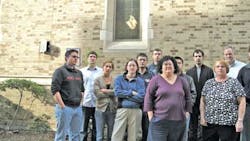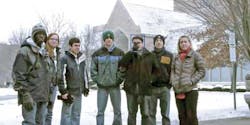Software detects suspects at the scene
A team of University of Notre Dame (Notre Dame, IN, USA) biometrics researchers are developing software that could help law enforcement officials identify criminals who return to the scenes of their crimes.
The Questionable Observer Detector (QuOD) software developed by Kevin Bowyer, Patrick Flynn, and Jeremiah Barr of Notre Dame's Computer Science and Engineering Department can identify individuals who repeatedly appear in video footage taken of bystanders at crime scenes.
The task was daunting because the researchers lacked a database against which to compare faces. In response, the Notre Dame team developed an automatic face-recognition algorithm that did not need to match people against an existing database of known identities. The algorithm places all of the sequences that represent a face of a particular individual in the same cluster and creates a distinct cluster for every individual. Then the facial image sequences are compared to facial sequences from a different video clip to determine if any one looks similar enough to represent a match.
An individual is considered suspicious if he or she appears too frequently in a set of videos. The number of appearances can be determined by law enforcement officials based on the number of crimes and videos available.
The Notre Dame researchers admit they still have technical challenges to overcome. Optimum facial-recognition technology requires high-quality lighting and video resolution, which is often unavailable at crime scenes. Also, people may not be looking directly at the camera in video of crowds. And the identification of a questionable observer becomes more computationally demanding in cases where there may be a large number of videos to analyze. The researchers are confident, though, that these challenges can be overcome and are continuing to improve their system.

